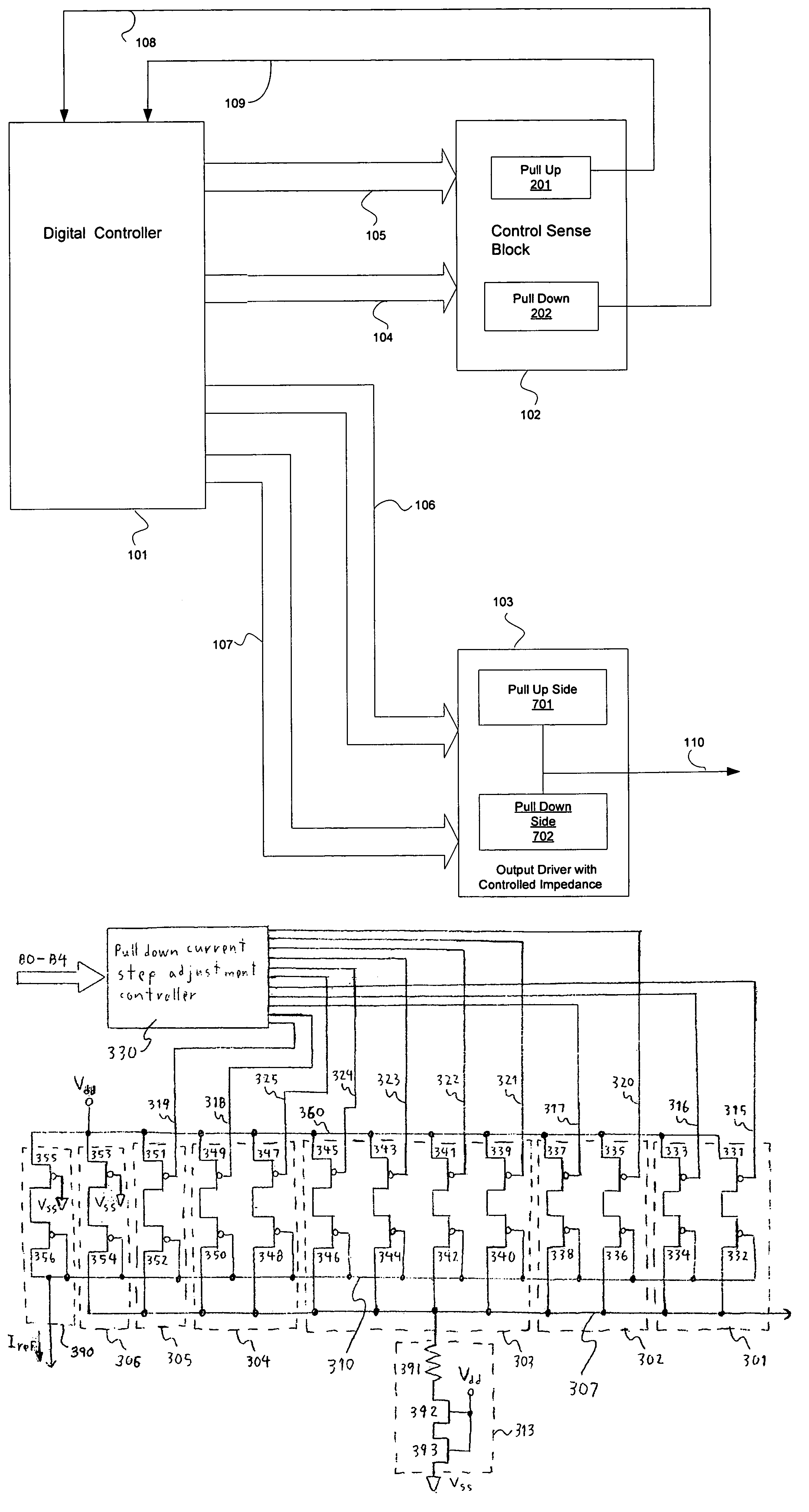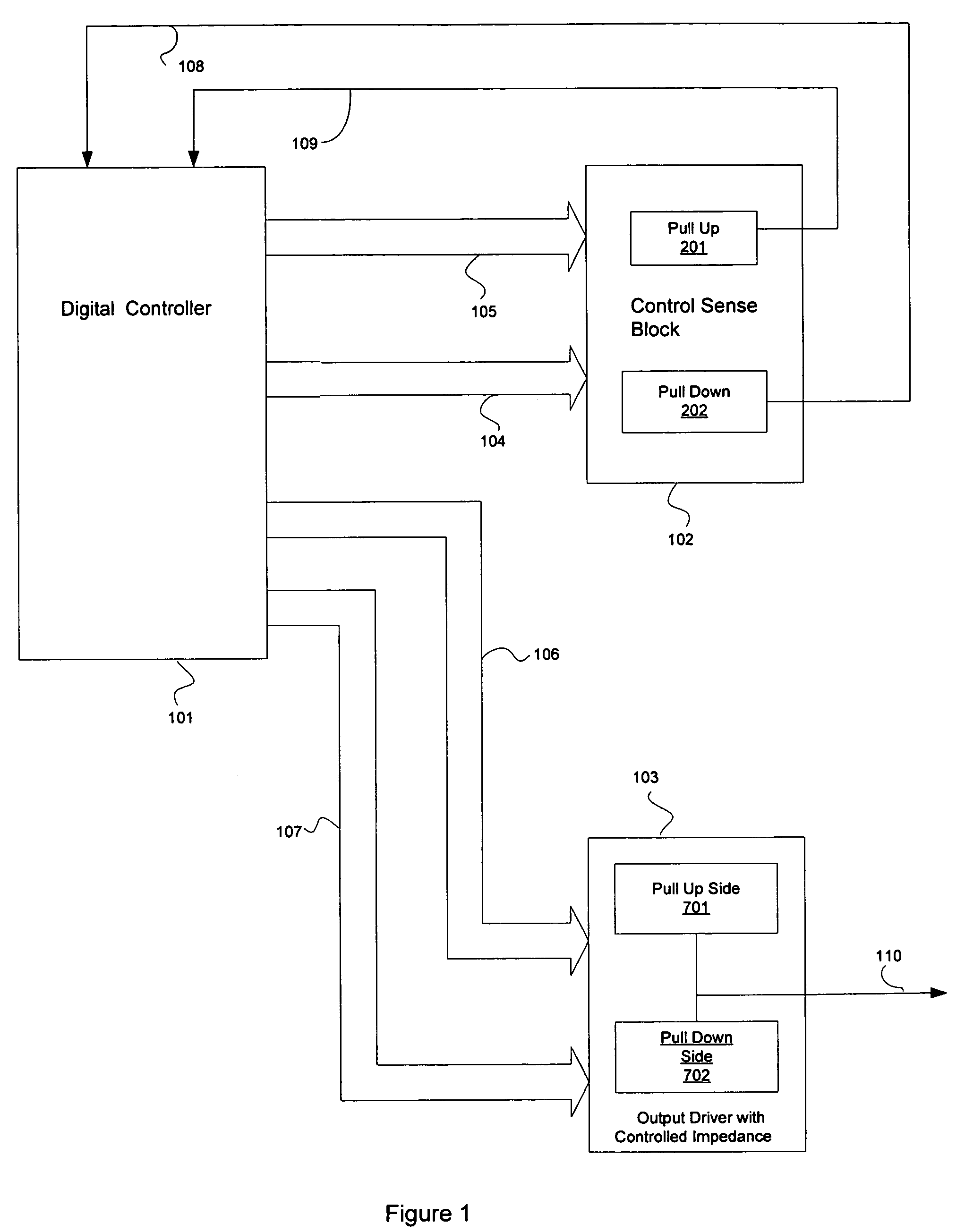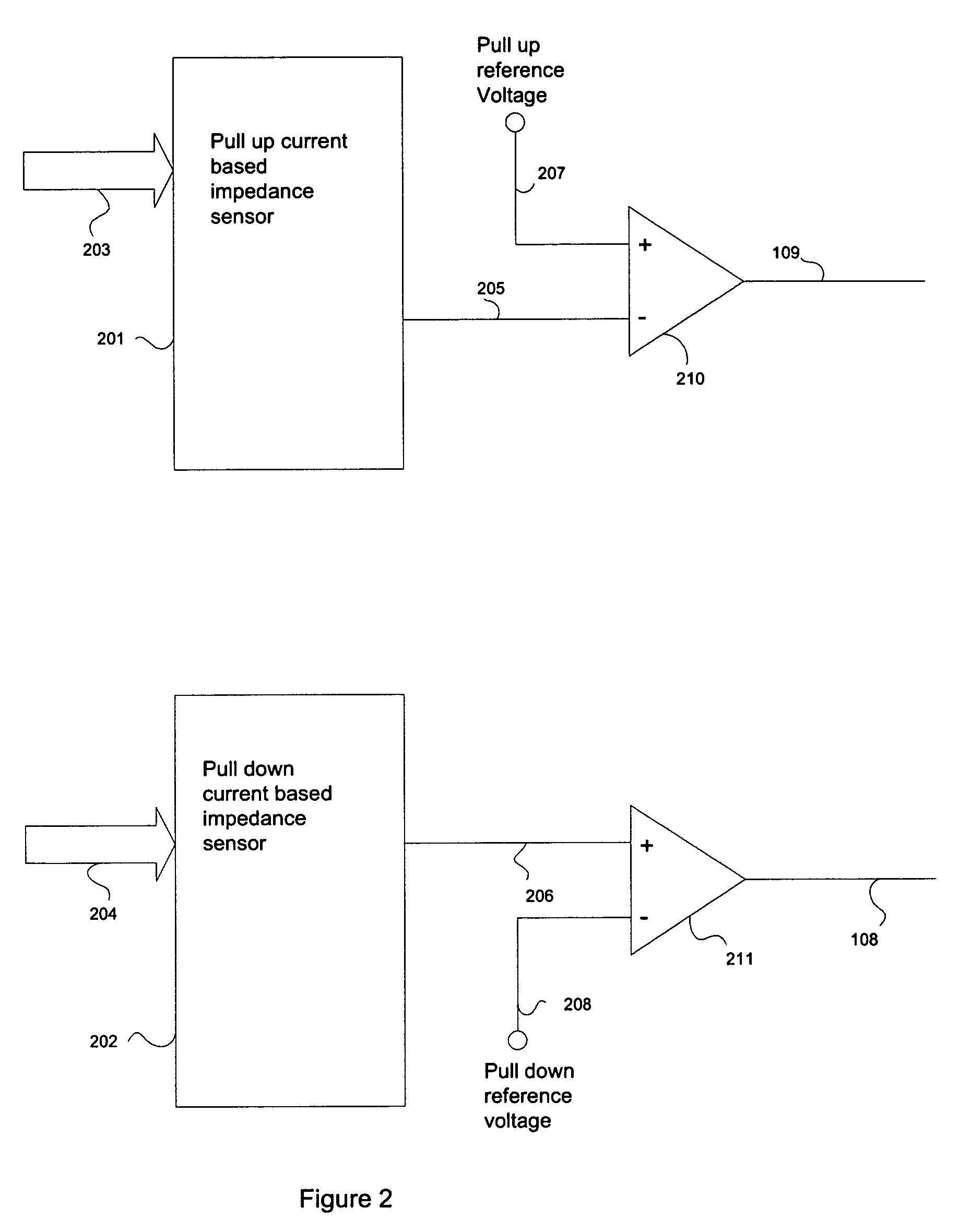System and method for dynamic impedance matching
a dynamic impedance matching and dynamic technology, applied in logic circuits, pulse techniques, and increasing modifications of reliability, can solve problems such as significant transmission line impedance, unfavorable device host function, and increased number of undesirable ic pins, and achieve high transfer rate and reliability, and boost the performance of peripheral devices.
- Summary
- Abstract
- Description
- Claims
- Application Information
AI Technical Summary
Benefits of technology
Problems solved by technology
Method used
Image
Examples
example implementation
Mathematical Description of Example Implementation of FIG. 3
[0191]Referring to FIG. 3, the control block consists of parallel current sources controlled by digital controller. Parallel current sources are scaled versions of external reference current i.e. Vbandgap / Rbias. These currents are dumped in an on-chip replica resistor to maintain reference voltage.
[0192]B0–B4 are control bits that are decoded into following eleven bits using following relationship:
Block 330
Signal 319=B4a=B4
Signal 318=B3a=B3
Signal 325=B3b=B3+B4
Signal 324=B2a=B2
Signal 323=B2b={overscore (B4)}B3B2
Signal 322=B2c=B4B3B2
Signal 321=B2d=B4B3B2
Signal 317=B1a=B1
Signal 320=B1b=B1{overscore ((B3B4))}
Signal 316=B0a=B0
Signal 315=B0b=B0(B1+B2+B3)B4
[0193]Iref=kref×VbandgapRext
(correction needed in FIG. 3)
[0194]Resistanceofblock313=Rreplica=Rtrim→3+Rdriveα
where a is a factor proportional to physical ratio of Rtrim→3 and Rt. Notice that in this example implementation, Rtrim→3 was used for Resistance#391 and
[0195]Rdrtiv...
PUM
 Login to View More
Login to View More Abstract
Description
Claims
Application Information
 Login to View More
Login to View More - R&D
- Intellectual Property
- Life Sciences
- Materials
- Tech Scout
- Unparalleled Data Quality
- Higher Quality Content
- 60% Fewer Hallucinations
Browse by: Latest US Patents, China's latest patents, Technical Efficacy Thesaurus, Application Domain, Technology Topic, Popular Technical Reports.
© 2025 PatSnap. All rights reserved.Legal|Privacy policy|Modern Slavery Act Transparency Statement|Sitemap|About US| Contact US: help@patsnap.com



